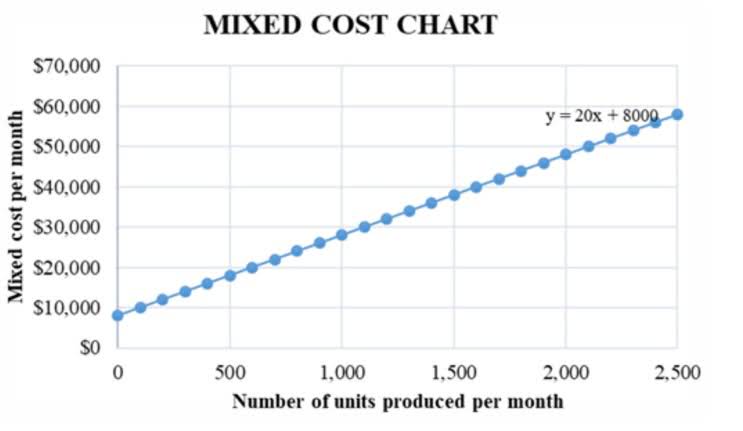The platform includes tools that automatically track eligible employees, pre-populate forms, and even file reports directly to the IRS. Standard HR software allows you to track and manage employee performance. This can include tools for goal setting and monitoring, succession planning and performance evaluations. This dichotomy shows that calculating your business’s optimal payroll costs entails more than identifying the lowest-priced offering with your desired set of features. To determine the best payroll services for small businesses, Forbes Advisor researched the industry and analyzed 23 different companies and their plans.
Look for a global HR platform that automates compliance updates, generates country-specific contracts, and ensures payroll aligns with regional requirements. Without payroll software, it’s difficult to pay your workers or comply with tax laws properly. So, it’s no wonder there’s such a broad selection of payroll management and automation solutions out there.
Payroll software testimonial
Businesses that hire remote-first teams, especially internationally, will find Rippling to be a terrific option. The Forbes Advisor Small Business team is committed to bringing you unbiased rankings and information with full editorial independence. We use product data, strategic methodologies and expert insights to inform all of our content to guide you in making the best decisions for your business journey. • The General Ledger interface creates an import-ready file that brings all your payroll journal entries into your general ledger software package. • Avoid manual journal entries and the expense of developing custom interfaces to connect your payroll and general ledger.
- These factors were broken down into categories and weighted differently in our overall conclusion.
- It also supports business growth with advanced HR tools, AI error detection, one-on-one HR support, and a top-rated mobile app.
- Once payroll was run, the software summarized how much was paid out and when.
Paycor
More than half of small firms with five or more employees pay an outside firm to prepare their payroll, according to the National Small Business Association1. Discover how ADP’s payroll software can help you improve your business operations. We looked at reviews on third-party sites, such as G2 and Capterra, from real users to gauge opinion of each software. Specifically, we looked at the number of ratings of 3.5 or higher out of 5 that each payroll app had on each site. QuickBooks payroll software is ideal for businesses that are already using QuickBooks Online or Desktop and want to add payroll functionality.
Each plan level comes with remote IP guard, necessary for invention rights and intellectual property protection. Paychex is an HR and payroll platform that can streamline workforce management for remote and hybrid businesses. It offers solutions that can support international operations, including global payroll capabilities and compliance assistance. The software centralizes team data, provides tools for benefits administration and time tracking, and can generate reports to uncover insight into your workforce.
It operates in all 50 U.S. states, so you can register your company using Gusto in any state where you do business. Whether your business has staff located outside the U.S. or is considering expanding its workforce to other countries, Remote should be your first stop when shopping for payroll services. Remote’s Fair Price Guarantee promises you won’t be charged any hidden fees when using the company’s employee and contractor management services. Only high-risk clients are required to pay a deposit, and the company lets businesses stop service at any time with no early cancellation fee. All payments to employees are made in the currency stipulated in their employment agreement, and only payments made in a different currency are charged a foreign exchange fee.
- In addition, when I contacted the chat support to ask if I had missed any customization options, I was given irrelevant responses and prompted to contact customer support via email.
- At times, the chat or help function can be slow to use, and I had to restart a few chats, which did not make me happy at that time.
- Using Wave Payroll, you can pay both employees and independent contractors with one click come payday.
- Lest you get carried away by the number of features or a beautiful user interface, it’s imperative that you prepare a list of questions beforehand that will address your core HR needs.
- The cost of payroll and HR software varies based on the provider, company size, and features included.
- Justworks offers two PEO plans, plus a couple of add-ons to expand your chosen plan’s functionality.
Clients name ADP a Leader in Small Business Payroll: G2 Winter 2025
Because the system keeps up with tax laws and regulations in all 50 U.S. states, the system automatically helps you stay compliant and flags any errors that need your attention. And, if the IRS contacts you with inquiries about your filings or payments, RUN will handle those communications for you. The co-employment relationship also means Justworks takes on some legal employer liabilities so you don’t have to, which isn’t the case for software-based payroll services. In exchange, you hand over control of some key employer processes, such as workers compensation.
QuickBooks Payroll
It is a good all-in-one solution for businesses that are more established and don’t want multiple HR apps to help them run their people function. BambooHR is a full HRIS that can help your business manage all People functions without having to use multiple pieces of software. That can be a good or a bad thing if a solution doesn’t offer a solid solution to a particular feature but BambooHR is pretty good at everything it offers. While we’ve spent a lot of time researching and coming up with this list of best payroll HR software, what is best for one company might not be for some other.
BambooHR has its own add-on payroll solution that allows data to flow automatically, reducing the risk of double entry and making payroll runs quick and easy. In addition to seamless data flow, payroll customers also enjoy comprehensive payroll reporting, superior customer support, and full-service tax filing. The best payroll software for your company depends on your business size and needs. Top payroll services for small businesses include Gusto and ADP RUN. Traditional companies offer customizable plans to fit your needs, while platforms tailored for startups offer straightforward pricing and all-inclusive packages you can get up and running in minutes.
Key Paycor features include its payroll processing tools, tax compliance services, mobile wallet (complete with a self-serve mobile portal) and expense tracking and reimbursement tools. However, some note that the software does not offer enough customization options, nor does it offer the detailed reporting they need. Several state that Wave Payroll’s customer support is unhelpful; the chat bot does not offer relevant solutions, and when they email customer support, it often doesn’t help, either. Many users claim the limited features the platform offers make it a good option for companies with five to 10 employees but no more.
It comes to the platform along with accounting, invoicing and payment processing for small businesses—replacing a laundry list of tools for many entrepreneurs. Square Payroll’s contractor-only plan supports unlimited payrolls and other features in its employee payroll service for only $6 per contractor per month. The bad news is that Square Payroll integrates with only one accounting system. The good news is that the one it integrates with is QuickBooks, the most popular accounting software for small businesses by a wide margin, according to market research firm 6sense.
Gusto is an online payroll and HR platform tailored for small payroll and hr app and online marketplace businesses. It offers payroll processing, automated tax calculations, and benefits administration. Key features include employee self-service, direct deposit, time tracking, and compliance support.
Think of this as a simulation of what it’s going to be like after you get this product onboard. Lest you get carried away by the number of features or a beautiful user interface, it’s imperative that you prepare a list of questions beforehand that will address your core HR needs. After spending countless hours in the HRMS vendor universe, we’ve found that the highest-rated payroll and HR solutions are laden with features that surpass the basic requirements of HR teams. But when your organization grows, it’s clear as day that you’re better off outsourcing menial payroll and HR tasks to a software tool. Gusto was purchased for a small company’s payroll, HR management, and processes.





















